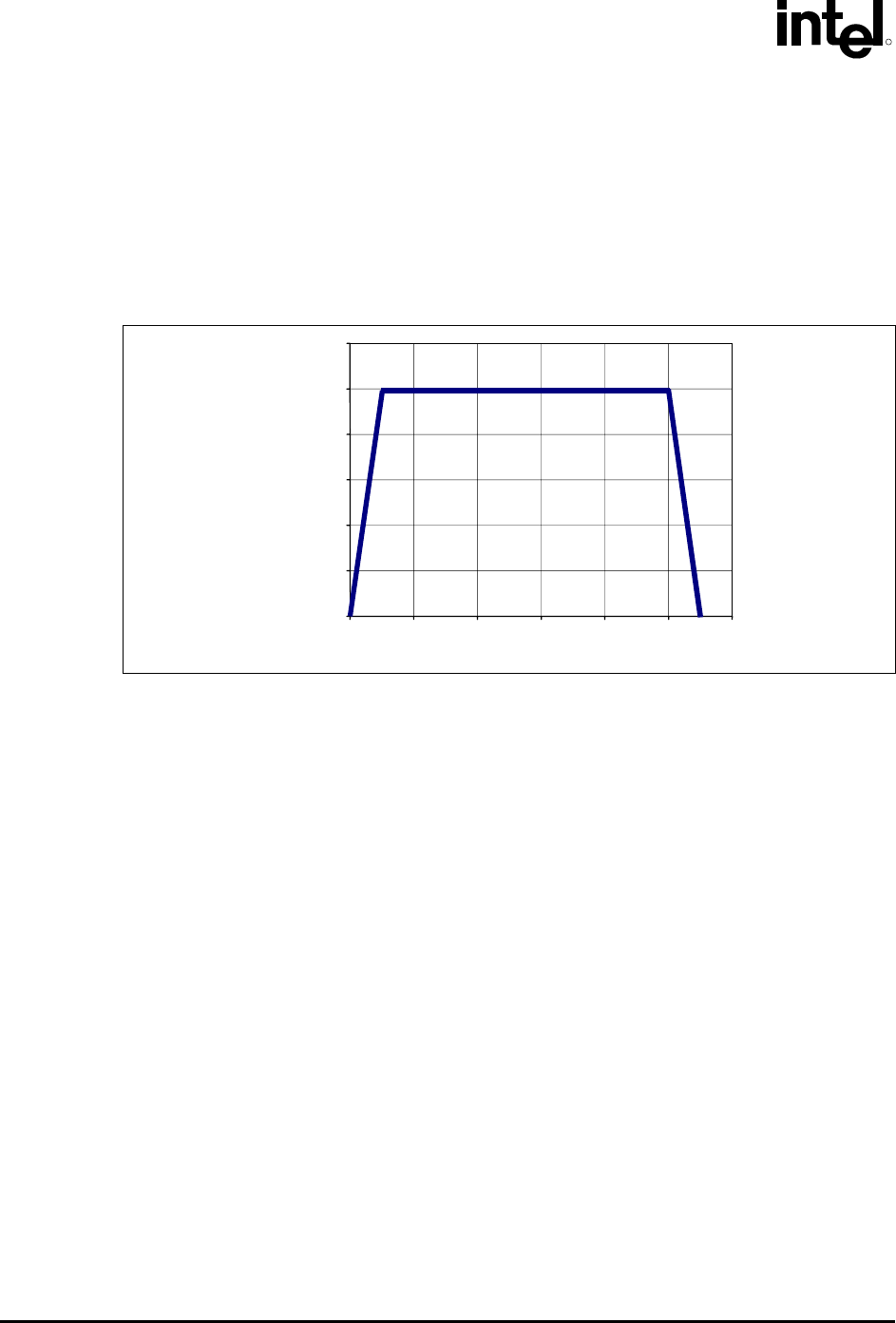64-bit Intel Xeon Processorwith 1MB L2 Cache Thermal/Mechanical Design Guidelines
Table Of Contents

Quality and Reliability Requirements
R
50 64-bit Intel
®
Xeon™ Processor MP with 1 MB L2 Cache
Thermal/Mechanical Design Guidelines
D.1.2.3 Shock Test Procedure
Recommended performance requirement for a baseboard:
• Quantity: 3 drops for + and – directions in each of 3 perpendicular axes (i.e. total 18 drops).
• Profile: 50 G trapezoidal waveform, 11 ms duration, 4.32 m/sec minimum velocity change.
• Setup: Mount sample board on test fixture.
Figure D-2. Shock Acceleration Curve
0
10
20
30
40
50
60
0 2 4 6 8 10 12
Time
(
Milliseconds
)
Accelration (g)
D.1.2.4 Recommended Test Sequence
Each test sequence should start with components (i.e. baseboard, heatsink assembly, etc.) that have
not been previously submitted to any reliability testing.
The test sequence should always start with a visual inspection after assembly, and
BIOS/Processor/memory test. The stress test should be then followed by a visual inspection and
then BIOS/Processor/memory test.
D.1.2.5 Post-Test Pass Criteria
The post-test pass criteria are:
1. No significant physical damage to the heatsink and retention hardware.
2. Heatsink remains seated and its bottom remains mated flatly against the IHS surface. No
visible gap between the heatsink base and processor IHS. No visible tilt of the heatsink with
respect to the retention hardware.
3. No signs of physical damage on baseboard surface due to impact of heatsink.
4. No visible physical damage to the processor package.
5. Successful BIOS/Processor/memory test of post-test samples.
6. Thermal compliance testing to demonstrate that the case temperature specification can be met.










